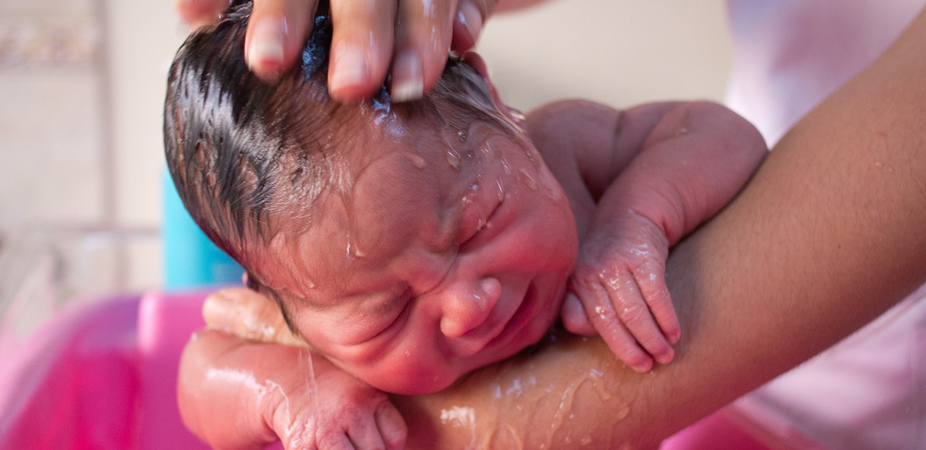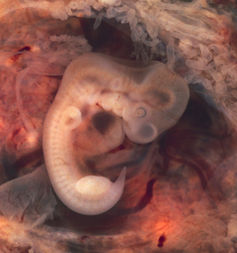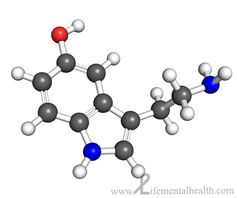
Giving Birth to New Insights into Brain Development and Disease (Op-Ed)

This article was originally published at The Conversation. The publication contributed the article to LiveScience's Expert Voices: Op-Ed & Insights.
Each one of us is the complex product of nature and nurture, genes and environment. They combine in a myriad of complex ways during embryonic and postnatal development to sculpt our brains and bodies.
Genetic and environmental factors also mediate and modulate our disposition for a range of different brain and mind disorders, both neurological diseases and psychiatric illnesses.
A new study by Tomohisa Toda and colleagues, published today in Developmental Cell, has contributed novel insights into how the process of birth can regulate specific aspects of brain development. This in turn may affect the way genes and environment interact in the healthy and diseased brain.
So the brain can process input from the senses, it has to develop spatial information, making a “map” of where sensory information is coming from. This begins during the late embryonic stages but is also sculpted by sensory input after birth.

The new findings suggest the formation of maps of the sensory world in the cerebral cortex involves not only the intrinsic genetic programme but also extrinsic environmental stimuli and a “feel good” molecule in the brain, known as serotonin.
The serotonin (5-HT) system has long been known to have a key role during brain development; however, these researchers discovered that the process of birth itself is an active trigger to accelerate circuit formation amongst neurons in the developing cerebral cortex. They showed this resulted from a reduction of serotonin levels in the brain immediately after birth.
Sign up for the Live Science daily newsletter now
Get the world’s most fascinating discoveries delivered straight to your inbox.
Exposure to new environmental stimuli has previously been shown to modulate serotonin levels in the brain. Negative factors, such as chronic stress, usually reduce serotonin levels. In experiments, environmental enrichment (increased sensory stimulation, cognitive activity and physical exercise) or even voluntary exercise alone (via running wheels) increases communication between neurons via serotonin.
Overall, adverse early life experience is thought to increase an individual’s susceptibility to mental health disorders. Interactions between serotonin and environmental factors such as stressful events have already been suggested as triggers for depression and anxiety disorders in vulnerable subjects.

A specific serotonin receptor (5-HT1A, identified by Toda et al.’s paper as one of the key mediators regulating how the sensory map is formed in newborns) has been increasingly associated with alterations in mood and emotion.
It has also been suggested by some researchers that severe adverse life events during pregnancy increase the risk of schizophrenia in offspring, with the serotonin system (as well as other brain transmitter molecules such as glutamate and dopamine) potentially mediating those effects.
Some researchers have hypothesised that serotonin dysfunction contributes to the core symptoms of autism, another major disorder of brain development. For instance, mice lacking brain serotonin (via mutation in a gene called TPH2) showed substantial deficits in numerous validated tests of social interaction and communication.
Serotonin system dysfunction has been detected in mouse models of neurodevelopmental disorders such as Rett syndrome, an autism spectrum disorder. For instance, serotonin was reduced in a mouse model of Rett syndrome, correlating with a smaller sensory map 10 days after birth, thus relating this disorder to the new paper by Toda and colleagues.
The majority of people with Rett syndrome have mutations in a single gene called MECP2. But some researchers have suggested environmental factors could also play a role in the pathogenesis of such autism spectrum disorders.
One additional disorder of brain development which lacks obvious genetic causes is sudden infant death syndrome (SIDS). SIDS is associated with a reduction in brainstem serotonin and serotonin (5-HT1A) receptor binding.
It will be important in all of these neurodevelopmental disorders to further explore the relative contributions of genes and environment, and to investigate key developmental milestones before, during and after birth.
This new paper has implications for healthy brain development as well as environmental factors affecting disposition for particular neurological and psychiatric disorders. Further studies need to be done to establish whether particular types of birth, such as premature delivery and caesarean section, alter brain development and predisposition to specific brain disorders.
Without such fundamental research into healthy brain development we will not be able to move forward in developing new treatments for complex and devastating disorders of brain and mind.
Thibault Renoir is affiliated with The Florey Institute of Neuroscience and Mental Health (University of Melbourne)
Anthony Hannan receives funding from NHMRC (Project Grants) and ARC (FT3 Future Fellowship).
This article was originally published at The Conversation. Read the original article. The views expressed are those of the author and do not necessarily reflect the views of the publisher. This version of the article was originally published on LiveScience.









